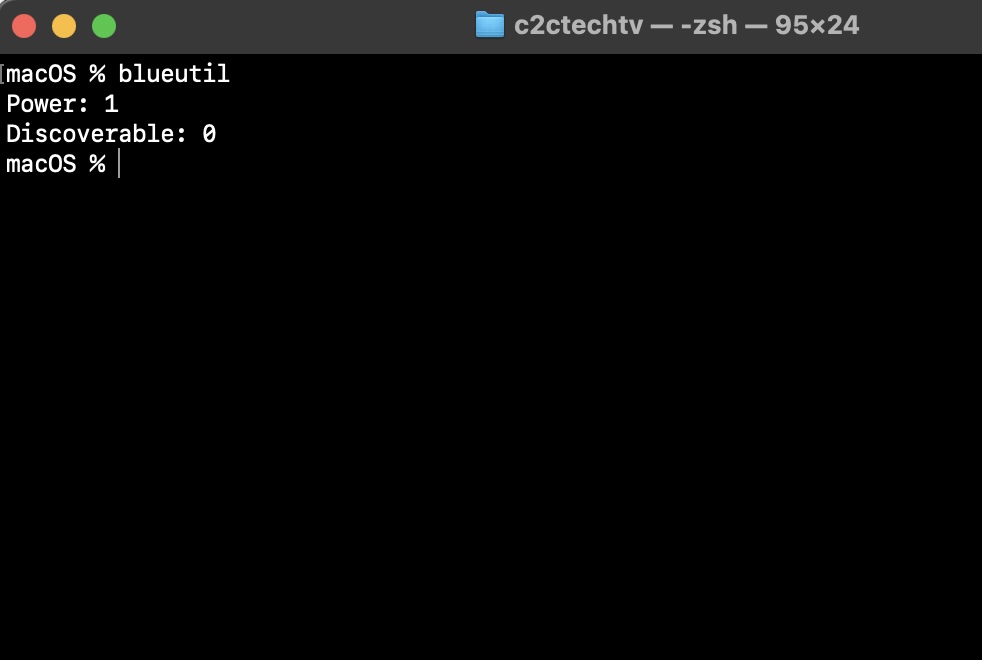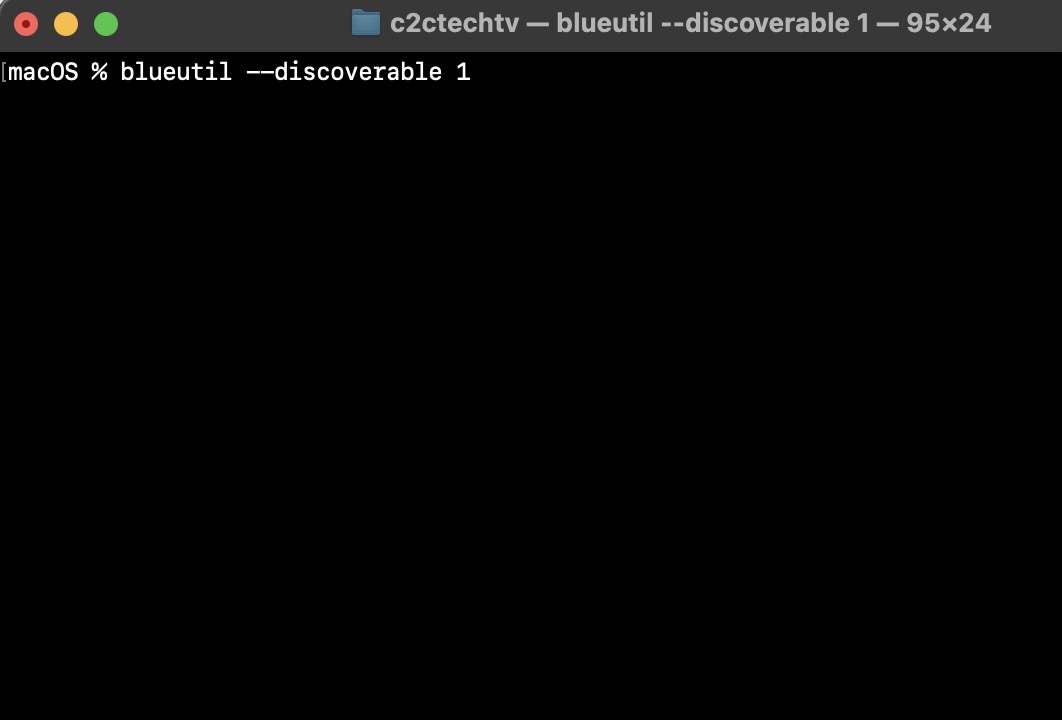Bluetooth is the most popular wireless technology which has become an integral part of our daily lives. Whether you're connecting wireless AirPods or headphones, keyboards, or mice, or to share files from other devices using AirDrop, or even controlling devices, Bluetooth plays a key role in today's computing.
If you have a macOS device and looking to take control of your Bluetooth settings from the command line or Python or Shell Script, blueutil is the tool you can make use of. In this article, we explore how to make use of blueutil to manage Bluetooth on your Mac.
What is blueutil?
blueutil is a command-line utility designed specifically for macOS that empowers us to control various Bluetooth using the terminal. We can turn Bluetooth on or off, list paired devices, inquire about nearby devices, or even connect and disconnect.
Installation
Before diving into the commands, you'll need to install blueutil. If you haven't already, you can do so using Homebrew, the popular package manager for macOS. Open your terminal and run the following command.
brew install blueutilBasic Usage:
Let's start with the basics. Running blueutil without any options will output the current state of your Bluetooth:
blueutil
Power: 1
Discoverable: 0
You'll see information about the power state and discoverable state of your Bluetooth.
Turning Bluetooth On and Off
You can turn Bluetooth on or off using blueutil with the -p or --power option, followed by the desired state (1 for on, 0 for off):
Example: Turn Bluetooth on
blueutil --power 1Example: Turn Bluetooth off
blueutil --power 0Checking Discoverable State
The discoverable state of your Bluetooth can also be checked and set using blueutil:
Example: Check discoverable state
blueutil --discoverableBS|Example: Set discoverable state (1 for discoverable, 0 for non-discoverable)
blueutil --discoverable 1
Exploring Devices
blueutil provides several commands to explore and interact with Bluetooth devices.
Listing Paired Devices
blueutil --pairedInquiring Nearby Devices
To discover nearby devices, you can use the --inquiry option. By default, it will scan for devices for 10 seconds:
blueutil --inquiryListing Connected Devices
To list the devices currently connected to your Mac, use the following command:
blueutil --connectedManaging Individual Devices
blueutil --info <device_id>Connecting and Disconnecting
To create a connection with a device, use the --connect option followed by the device's ID:
blueutil --connect <device_id>Conversely, you can close a connection to a device using the --disconnect option:
blueutil --disconnect <device_id>Pairing and Unpairing
Pairing with a device is straightforward. Use the --pair option, followed by the device's ID. If required, you can also provide a PIN of up to 16 characters:
blueutil --pair <device_id> [PIN]To unpair a device, you can use the --unpair option:
blueutil --unpair <device_id>Adding and Removing from Favorites
blueutil --add-favourite <device_id>Conversely, you can remove a device from your favorites list using the --remove-favourite option:
blueutil --remove-favourite <device_id>Advanced Options
| Advanced Options | Description |
|---|---|
--format FORMAT | Change output format for device information and listing commands. |
--wait-connect ID [TIMEOUT] | Wait for a device to connect (EXPERIMENTAL). |
--wait-disconnect ID [TIMEOUT] | Wait for a device to disconnect (EXPERIMENTAL). |
--wait-rssi ID OP VALUE [PERIOD [TIMEOUT]] | Wait for a device's RSSI (Received Signal Strength Indicator) value (EXPERIMENTAL). |
Waiting for Events
blueutil provides experimental options to wait for specific events related to devices:
--wait-connect: Wait for a device to connect.
--wait-disconnect: Wait for a device to disconnect.
--wait-rssi: Wait for a device's RSSI (Received Signal Strength Indicator) value.Exit Codes
blueutil returns exit codes that can help you understand the result of your command:
| Exit Codes | Description |
|---|---|
0 | Success. |
1 | General failure. |
64 | Wrong usage, such as missing or unexpected arguments. |
69 | Bluetooth or interface not available. |
70 | Internal error. |
71 | System error, like a shortage of memory. |
75 | Timeout error. |
Facing issues? Have Questions? Post them here! I am happy to answer!
Rakesh (He/Him) has over 14+ years of experience in Web and Application development. He is the author of insightful How-To articles for Code2care.
Follow him on: X
You can also reach out to him via e-mail: rakesh@code2care.org
- How to show line numbers in Nano on Mac
- How to install Jupyter Notebook on macOS Sonoma
- How to Disable Remote Management using Mac Terminal
- Test internet speed using macOS Terminal command
- Docker Desktop needs privileged access macOS
- Google Search Hot Trends Screensaver for Mac OS X
- How to do calculations in Mac Terminal
- How to make TextEdit the default text Editor on Mac
- How to Show Full Website Address on Safari for Mac (Ventura/Sonoma)
- The Zsh Shell - Mac Tutorial
- Opening mac Terminal
- How to change the name of your Mac running on macOS Ventura 13
- How to find the Battery Cycle Count on macOS Ventura
- How to set an emoji as Zsh terminal prompt in macOS
- How to access Trash Folder using Mac Terminal Command
- macOS Ventura XCode Command Line Tools Installation
- Hide Bluetooth icon on Mac Menu Bar macOS Ventura 13
- How to run .sh file in Mac Terminal
- Terminal Command to get the list of available shells in macOS
- How to see Storage Information on macOS Ventura
- How to Go To /usr/local/bin on Mac Terminal?
- How to do screen recording on Mac
- How to Find File and Directory Size in Mac Terminal
- Open .bash_profile File in TextEdit using Terminal
- Remove Now Playing icon from macOS Big Sur Menu Bar
- How to add Date and Time to Windows Notepad File - NotepadPlusPlus
- How to install maven in macOS using Terminal Command - MacOS
- osascript wants to make changes while Android Studio Installation on Mac OS X - Mac-OS-X
- Java Thread.sleep() Method Deep Dive with Examples - Java
- 17: Find Factorial of a Number - 1000+ Python Programs - Python-Programs
- How to Convert String to DateTime in Python - Python
- Docker Desktop needs privileged access macOS - MacOS
- -bash: startup.sh: command not found - Apache Tomcat 8 - Tomcat